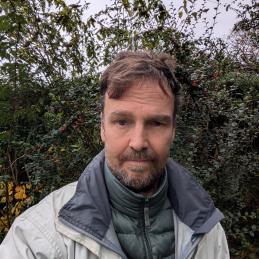Alistair Yeomans

Projects
The study will begin by mapping stakeholders in the firewood sector, including government bodies, transport authorities, and firewood suppliers. An online survey and interviews with major firewood suppliers will help assess domestic firewood movement and identify gaps in awareness and risk assessment. The project will also explore international best practices in firewood biosecurity through literature reviews and expert consultations, as well as analyse data from firewood import records to quantify the scale of international trade. Additionally, the research will evaluate treatment interventions such as heat treatment and steam sterilization to mitigate biosecurity risks. A component of the project is the creation of resources for and recommendations around a potential future public awareness campaign designed to educate stakeholders on the risks associated with firewood movement, drawing on successful international models.
By providing evidence-based recommendations, this research aims to strengthen firewood biosecurity measures, helping safeguard Scotland’s forests from invasive pests.
Image credit: wood by günter from Pixabay
Through literature review, case studies and stakeholder engagement, this project will create a resource which provides specific, clear biosecurity advice to conservation practitioners so that they can produce a biosecurity management plan before a project begins, that would have the potential to become a component of licenced activities in the natural environment.
Image Credit: Wolfgang Claussen from Pixabay
PHC2022/08 will create summary overview documents that cross references the 39 notifiable pests (from the PHRR) with management measures and the requirements of the Plant Health Management Standard. Therefore, plant pest information will be presented in manner to support businesses and organisations conduct a Site and Operations Pest Risk Analysis.
PHC2022/08 is 50% match-funded from Defra
This work will examine and define the extent to which current UK and Scottish regulations and voluntary schemes control the way growing medium constituents must be treated prior to their inclusion in growing media, to generate an understanding around mitigating risks of spread of plant pathogens. Workshops with stakeholders will improve understanding of current practices and perceptions of alternative ‘best practice’ options for nurseries managing waste materials and for biosecurity risks of using reduced peat and peat-free growing media. A concurrent diagnostic study will identify Phytophthora species present in waste heaps from nurseries located in Scotland and the potential for these pathogens to spread into healthy plant stock either aerially or via water run-off and soil transfer.
Findings will be combined with a comprehensive desk-based study and feed into follow-up workshops on the development and introduction of ‘best practice’ guidance on the most appropriate and safest ways to manage waste growing media and plant material, to be built into the Plant Health Management Standard.
• How can important plant species in botanic collections and historic gardens be protected from inadvertent disease introduction on the footwear, etc. of visitors?
• What is the risk of further inadvertent spread from gardens into the natural environment?
• How can gardens, nurseries, farms and the natural environment be protected from pest and disease spread through the movement of large machinery (e.g., tree harvesting machines)?
Through a desk based study that incudes literature review, contact with plant health authorities, semi-structured interviews with landowners and expert practitioners from other sectors, the project will; determine what official biosecurity advice already exists and procedures are in place in Scotland; explore other sectors which provide additional novel approaches to biosecurity; and carry out a thorough assessment of what procedures are in place, or being considered and developed, in different countries/regions to address these specific biosecurity risks.
Publications
Plant Biosecurity Resources – increasing the accessibility of notifiable plant pest information for Professional Operators
This project developed 39 pest-specific datasheets and a prototype webtool for Professional Operators to provide tailored pest information to use when issuing plant passports and support risk assessments for site operations.
Biosecurity practices to support plant health: a review of knowledge and practice
This research investigated plant biosecurity risks from site visitors, tools & equipment, and large machinery. In addition to reviewing published guidance, UK businesses and organisations were engaged via questionnaires and interviews to explore how these aspects of biosecurity are understood and what procedures may be in place to address them.
Identifying the plant health risks associated with plant waste disposal and peat-free growing media and developing best practice guidance for waste disposal and composting across sectors
This research focussed on two areas of biosecurity that provide significant risk to plant businesses and the wider environment in Scotland, i) plant waste management, and ii) the constituents of reduced-peat and peat-free growing media.
